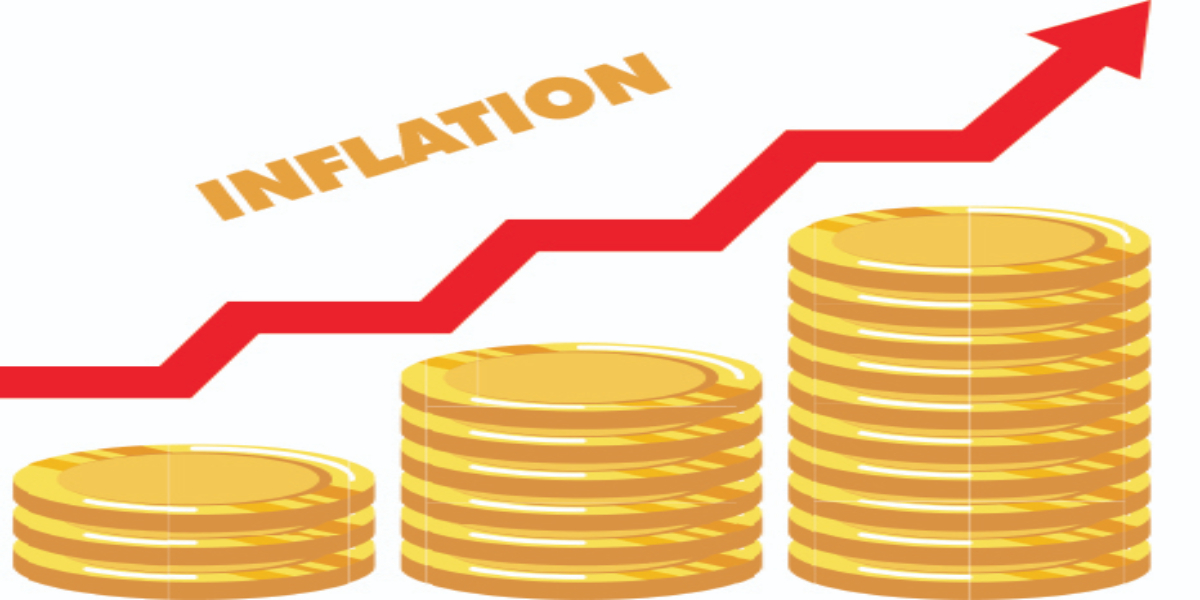Just like the whole world, Pakistan’s economy also showed signs of recovery from the Covid-19 pandemic in 2021 but rising twin deficits and inflationary pressures eroded the gains and made the life of a common man miserable.
Unlike 2020, in which lukewarm economic activity was witnessed, the year 2021 remained better for the economy. The fear of the Covid-19 pandemic subsided to a great level because of mass vaccination drive by the government. Surprisingly, Pakistan dealt the Covid-19 pandemic slightly better than the regional countries such as India and Bangladesh and because of this, exports, especially, that of textiles showed robust growth.
However the economic activities revival globally spur a demand and as a result the prices of oil, gas, coal, edible oil and steel increased phenomenally in the international market, resulting in the hike in inflation in Pakistan, which reached 12.3 per cent in the first six months of FY22.
Senior economist Sajid Amin Javed said that the economy returned to growth trajectory but unfortunately it brought no respite for the common man.
The prices of all essential food items, including wheat and sugar, in which the country is self-sufficient, went up. “The double digit inflation is not just import driven, the prices of all the locally-produced items went up,” he said.
Regarding the government’s claim that an increase in the car sales and construction activities, rush at restaurants shows that the economy is on the right path, Amin said that it also indicates inequality in the society because huge queues were also witnessed on the utility stores and Sastaa Bazaars who for mere 10 per cent to 20 per cent discount wait for hours to purchase daily use items.
Just like the past, the growth momentum in the country is consumption and import-based and that’s why it is already showing signs of overheating, which was also mentioned by Finance Minister Shaukat Tarin. “We need to slow down the growth momentum to make it sustainable,” he said. Pakistan’s current account deficit has already reached $7 billion in the first five months of FY22, whereas it was in surplus by $1.88 billion in the same period last year.
The steep rise in the current account deficit is mainly because of trade deficit, which has already reached $20.6 billion. Though the exports showed an impressive growth of 27 per cent, it was totally overshadowed by imports, which went up 70 per cent in the first five months of FY22 to reach $33 billion.
Similarly, the remittances though rose 9.7 per cent to reach $12.9 billion in the period under review but still they’re unable to support the current account deficit, which was badly hit by massive trade deficit.
The breather given by the International Monetary Fund (IMF) during the Covid-19 pandemic phase is also over. To appease the IMF, the present PTI government has already increased the electricity tariff for the second time by Rs1.39/unit. Besides, through the Finance (Supplementary) Bill, 2021 and the State Bank (Amendment) Bill 2021, the federal government has withdrawn tax exemptions of Rs343 billion and give autonomy to the central bank, which was demanded by the IMF since long.
Now, the IMF is likely to approve two tranches of over $1 billion in its Executive Board meeting, which is scheduled for the second week of January 2022.
Former finance minister and eminent economist Dr Hafeez A Pasha has recently admitted the fact that the government was able to protect the common man from the withdrawal of tax exemptions but it will yield only Rs200 billion to Rs225 billion, which will not be enough to meet the shortfall in the petroleum levy target of Rs610 billion.
The next six months, even if the government would charge full PDL, will not exceed its collection beyond Rs340 billion.
“What I am fearing is that [the] IMF may demand other revenue measures from the government because in my opinion, the FBR’s revenue collection, even if it crosses the target, will not be beyond Rs220 billion,” he said.
To meet the rising import bill, the government has already borrowed $3 billion from Saudi Arabia on very hard terms and conditions, but still unable to control the rupee depreciation, which reached over 10 per cent in the last one year. The buying spree of the dollars has already put heavy pressure on the exchange rate, which reached over Rs176.
Economic sanctions on Afghanistan after the fall of Ashraf Ghani’s regime at the hands of Taliban also made the dollar scarce in the open market where it was trading over Rs180. Because of this, the hawala and hundi business of the dollar is again on the rise.
Economist Sajid Amin believed that whenever there is a panic- like situation in the market or regulatory framework weakened, parallel markets start doing businesses like hawala and hundi and the same thing is happening in Pakistan, as well.
Economist Sami Ullah Tariq said that the first half of the year was full of optimism but the second half remained full of challenges.
“The Pakistan Stock Exchange benchmark KSE-100 Index after reaching a level of over 49,000 points closed around 44,600 points, which means the growth remained flat and [the] same happened with the rupee, which after making a gain of Rs7 to Rs8 in the first half took a heavy battering in the second half to close at Rs176,” he added.
In 2021, the Pakistan stock market received a setback when it was downgraded in the MSCI Index from Emerging Market to Frontier Market.
Economist and spokesman for the Ministry of Finance Muzzammil Aslam said the growth momentum started in 2021 is on strong footings and the government is making all-out measures to make it sustainable.
“We’re exploiting our indigenous resources, especially focusing on agriculture to reduce the import bill and make the economy self-sufficient in food and other essential items,” he said, adding that after a long time, the exports started picking up.
In the last one year, the IT exports increased over $1.5 billion to reach $3.5 billion, he said, adding that because of the government policies, the country harvested bumper crops of wheat and sugar, whereas cotton crop is likely to increase 20 per cent to cross the mark of six million bales. “For the first time, [the] exports will cross $31 billion in this financial year, which will be a landmark achievement.”
Regarding inflation, Aslam said that in the second half the prices of petroleum products, coal, liquefied natural gas (LNG), edible oil and steel almost doubled and all the countries, which import these items are facing high inflation.
He admitted the fact that in urban areas salaried or fixed income groups are feeling the heat, but dispelled the impression that the people in rural areas are affected by inflation.
“Because of the bumper crops, [the] farmers are able to purchase motorcycles, tractors and other luxuries,” he said, adding that an increase in remittances and investments in Roshan Digital Accounts by overseas Pakistanis showed that the economy is going in the right direction.
Economist Sajid Amin; however, holds a different view and said that despite bumper crops, a very long and big protest was held by the farmers.
The academia and the government has to find out who is purchasing tractors and motorcycles. “May be the motorcycles have been purchased by the jobless people who are working for Bykea or foodpanda and apart from this because of poor public transport system motorbikes are becoming a necessity,” he added.
Amin also said that almost 90 per cent of the farmers hold less than 12 acres of land and may be the tractors and other agriculture machinery has been purchased by the feudal and corporate farmers.
The biggest dilemma the PTI government is facing is the loss of ‘credibility’ regarding its policies. Despite over 11 per cent inflation and joblessness, the prime minister, ministers and other government functionaries are declaring Pakistan as the cheapest in the region, but no one is ready to accept their claim.
[embedpost slug=”/pakistan-received-over-3-billion-from-expats-in-rdas-since-september-2020/”]

















